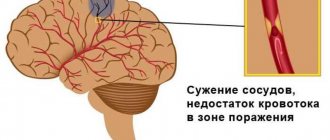Author Peter Deryabin
08/31/2015 13:27 (Updated: 03/12/2020 11:40)
Health » Healthcare
Disputes about the effects of hypnosis on the human body have been going on for centuries. Can hypnosis really cure diseases? How does the hypnosis method work? And what is trance? These questions are answered by Pravda. Ru was answered by the famous hypnotist, creator and director of the Moscow School of Hypnosis, author of many books on the theory and practice of hypnosis Gennady Goncharov.
Hypnotist: a “Golden Age” awaits earthlings
— Gennady Arkadyevich, there are scientists who are sure that the hypnotic state is an atavism that we inherited from animals in order to react unconsciously in case of danger. But in ordinary, everyday life, this is not a necessary property that should not be used often. What can you answer to this?
“I can answer that there are other scientists who believe that a hypnotic or trance state makes a person a god-man, that without trance a person is not fully developed.
As a way to concentrate consciousness, such techniques have existed for many thousands of years. This happened during the time of the pyramids, and there are even corresponding images. This happened in India, China, and Japan.
Now this is also no less in demand, since people are experiencing colossal information overload. Happens:
- personality burnout
- chronic fatigue
and similar techniques work, maybe even better than new ones.
— You are probably often told that it is rare to meet a person with documented supernatural abilities. In 1992 in Tokyo you became the best hypnotist in the world. Please tell me why you decided to participate there? Did you want to prove something to yourself or others?
“In Tokyo I had the opportunity to choose from five thousand people. I used the test and a former sumo wrestler came up to me on stage. Before I started working with him, we did certain tests with him. He had a watch-like device on his hand, and data was displayed on a large screen:
- hemoglobin
- pulse wave propagation speed
- white blood cell count
everything that could be deduced.
And I sent him to the age of five. That is, I convinced him that he was five years old. In Japanese - "go, taro chan", a small five-year-old boy. And he sang songs about yellow tulips and drew.
He drew a rather beautiful cat. There is a picture of him sitting and playing in the sand. He didn't even want to get out of this state. I sent him to the age of five, and all his indicators changed, they became like those of a five-year-old child.
Source: Pravda photo archive. Ru
There were 200 participants at Tokyo University, and I think the Japanese were just trying to find various secrets to use later, as is usually done in Japan.
Talented people are invited, all this is documented, and then, to some extent, it is used for the latest technological developments. But what happened was what happened, the indicators changed and became like those of a five-year-old child. In essence, I managed to change time itself. No one has ever done this in the history of mankind.
It was very easy to work, since the person was very hypnotizable, easily amenable, he entered a deep state. Moreover, he had absolutely no memory of what was happening to him, and only instruments recorded these changes.
This is precisely the highest stage, it is called the somnambulistic stage. The remaining 199 participants demonstrated all this on themselves.
There were yogis, Chinese Wushu masters - very strong competitors, I must admit.
This competition was very strong. But I worked with a Japanese person, not with myself, with an unprepared person, and the jury took this into account. That's how I got the Grand Prix in Tokyo.
And I also gave him a gift that for six months he would have a post-hypnotic suggestion, these indicators would be maintained.
Hypnosis and hypnotherapy
If you think that you are very far from hypnosis and have never been subjected to it, then you are very mistaken! Most likely, or not, absolutely for sure: you experience a state of complete immersion in something very interesting, exciting to such an extent that you stop noticing what is happening around you. This could be reading a book with a fascinating plot that you can’t tear yourself away from, watching an exciting movie, your favorite computer game, etc. The same prostration is possible in a person dozing or dreaming in reality. This is not a dream, but a trance, and it is this that is caused by hypnosis.
But in this article we are not talking about hypnosis for entertainment in show programs, in which certain images are delivered to a person’s subconscious. We are talking about the one that is used for treatment - hypnotherapy. It is used by psychiatrists, psychologists, psychotherapists in addition to other treatment methods.
A hypnologist has special techniques that put a person into a trance, which influence the depths of the subconscious - the unconscious. A specialist, gaining access to the hidden, finds the cause of psychological trauma and trouble. The doctor has the opportunity to correct, change the way of thinking and acting, the perception of the client. A person in a trance “throws out” the accumulated negative baggage: negative emotions, anger, resentment, pressure, etc. And then he begins to feel at peace, he begins to believe in himself, he wants to live life to the fullest and enjoy it.
Hypnotherapy helps to cope with many mental problems:
- depression;
- phobias – fear of open and closed spaces, insects, heights, air travel, water, etc.;
- apathy;
- eating disorders - bulimia, anorexia, compulsive overeating, orthorexia;
- excessive thinness and obesity;
- panic attacks, anxiety states;
- various addictions – drugs, alcohol, gaming;
- difficulties with communications;
- tension;
- fears – sexual and of the opposite sex;
A psychologist-hypnologist will also help you find a solution to the problem, gain control over your life, and achieve your goal. Using hypnosis, a psychotherapist can also cure some not too complex mental disorders.
It should be understood that quite often different problems have the same cause, and it is enough to eliminate it to cope with all of them at once.
Therapeutic hypnosis is safe and effective. Psychotherapists and psychologists additionally study hypnotic techniques for many years and carefully practice.
A little history
It is believed that the first mention of hypnosis is more than 3 thousand years old. The hypnotic effect on human consciousness was used by the priests of Ancient Egypt, India and Tibet. The trance state was used in their practice by the ancient healers of the East, Ancient Greece and Rome. The records of the famous Paracelsus have survived to this day, who considered hypnosis to be the influence of psychic force (fluid) on the patient with the help of cosmic energy.
Later, in the Middle Ages, the wonderful properties of hypnosis began to be explained not by cosmic energy conducted through the hypnologist to the patient, but by “animal magnetism”, which has a completely earthly biological origin. This discovery belongs to Franz Anton Mesmer, a German doctor and parapsychologist of the 18th century. Initially, contemporaries reacted ambiguously to Mesmer: some considered him a charlatan, others – an occultist and mystic. Although much of what Mesmer did indicates that this researcher was one of the founders of parapsychology. But later the scientist gained many followers, and his teaching itself was called mesmerism.
In 1784, Mesmer's student Armand de Puysegur made an important discovery. He found out that it is possible to treat people without touching the body. He began to put patients into a state that looked very similar to sleep, and called this state somnambulism. In this state, the patient became able to indicate the cause of his illness. One of the most striking examples from de Puysegur's practice was a peasant named Victor. Illiterate and inclined to express himself rudely, in a state of “somnambulism,” Victor spoke very correct French and had refined aristocratic manners. In addition, while in a trance, Victor was able to make medical diagnoses, the accuracy of which amazed doctors.
At the beginning of the 19th century, the Catholic monk Faria stated that there is no magnetic fluid, and the state of trance arises only due to the effect of fascination (bewitchment) of the subject by the hypnotist and the power of persuasion that the hypnotist uses. By forcing a person to focus his attention on a moving object, Faria caused him auditory, visual, gustatory and olfactory hallucinations. It is believed that it was he who laid the foundations of stage hypnosis.
Later, Faria's followers began to use hypnotic trance for pain relief during dental treatment and surgical operations.
The term “hypnosis” itself appeared only in 1843 thanks to the English doctor James Braid.
Indications and contraindications
You should contact a psychologist-hypnologist in the following cases:
- pathological fatigue that does not go away even after a long rest or sleep;
- communication problems;
- nervous breakdowns;
- severe headaches;
- communication problems, etc.
A psychotherapist will prescribe hypnosis as a treatment if:
- any mental abnormalities have been established;
- there are phobias;
- for obsessive-compulsive disorder;
- for neuroses;
- in the initial stages of addiction or after substitution therapy;
- a person has complexes and low self-esteem, which reduces the quality of life, etc.
The use of therapeutic hypnosis is prohibited for:
- those suffering from schizophrenia;
- epileptics;
- people with addictions taking medications during substitution therapy;
- individuals with obvious personality degradation;
- pregnant women;
- patients with a serious psychiatric diagnosis;
- individuals who are intoxicated.
Content
- 1 History 1.1 Paris School of Hypnosis
- 1.2 Nancy school of hypnosis
- 1.3 Russian and Soviet school
- 1.4 James Braid
- 1.5 Sigmund Freud
- 1.6 Dave Elman
- 1.7 Milton Erickson
- 2.1 Hypnotherapy
- 4.1 Russian Orthodox Church
How does the session work?
First, the hypnologist gets acquainted with the patient, collects anamnesis, determines the psychotype, clarifies the request and, with the help of special tests, checks the degree of hypnotizability of the client.
After this, the specialist announces readiness for work and the number of sessions. It should be understood that no healing can happen in one meeting, because first you need to find out the cause of the problem, how serious it is, discover the psychological trauma and the core of the injury, and then take measures to eliminate it. For the success of hypnotherapy, not only a highly qualified specialist is required, but also the desire of the patient - if he himself does not want, for example, to get rid of addiction, nothing will work.
As a rule, 5 sessions are prescribed for an hour or two a day. The room where meetings are held is decorated in a calm interior; strict silence reigns here - no noise should penetrate from the outside.
Technicians
There are several types of hypnosis, they differ in the concentration of the client’s attention inward and the degree of suggestibility. But with each of them, the protective mechanisms of consciousness are turned off and deep psychotherapy can be carried out for the benefit of the patient.
Classic hypnosis. The patient is put into a deep trance and answers the hypnologist's questions. The answers received are used by the specialist to understand the causes of the problem and plan further treatment.
Regressive hypnosis is the most difficult. Based on philosophical teachings about reincarnation and is a symbiosis of hypnosis and spiritual practice. The patient in a trance is sent on a mental journey into the past and, thanks to this, the “culprits” of the problems are found.
A woman who was terribly afraid of water, in a hypnotic dream, saw herself drown in a pond in a past life. After visiting a hypnologist, she decided to sign up for a swimming pool to learn how to swim.
It is also possible to “go into the future”, allowing you to know in the future how to cope with the situation that has arisen.
Ericksonian hypnosis has a gentle effect on the patient's subconscious. The latter is put halfway into sleep, given instructions, but he must not strictly follow them, and may refuse some. After leaving a trance, a person remembers everything that happened to him.
Projective hypnosis . In the inner world of a person who is in a trance, in his subconscious, images and sensations arise. The hypnotherapist and the client decipher them so that the latter gets rid of uncertainty, anxiety, phobia, and understands himself better.
Literature
- Shertok L.
Hypnosis: Theory, practice and technology.. - 1961. - Hawk R. R.
Behavior in hypnosis // 40 studies that shook psychology = Forty studies that changed psychology / Roger R. Hawk (Ph.D.). — 5th international ed. — St. Petersburg: prime EUROZNAK; Moscow: OLMA-Press, 2003. - Ch. 2: Perception and awareness. — P. 82-91. - (Project “Psychology - Best”). - BBK 88.1. — UDC 159.9.01(G). — ISBN 5-93878-096-9. - Voropaeva M. S.
FOREIGN RESEARCH OF HYPNOSIS: THEORIES AND EXPERIMENTS // BULLETIN OF MOSCOW UNIVERSITY. - 2009. - March.
Myths about hypnosis
Hypnosis and hypnotists have always been considered something mysterious, dangerous, somewhat fraudulent, but interesting. Numerous films, works of fiction and revealing news add fuel to the fire. In them, hypnosis is used for selfish purposes, often unseemly. Let's try to debunk such myths.
- The hypnotized man falls asleep. This is not true, because during sleep a person cannot be asked to do something when, as if under hypnosis, he follows instructions. It would be more correct to say that hypnosis is an altered state, a trance, in which an individual feels and hears everything, but cannot fully control his mind.
- One who masters the technique of hypnosis can force an individual under his influence to do anything (even kill). Yes, it can, but only if such an action is part of the latter’s value system. If not, then the hypnotist will have to work hard to create in a person the feeling that killing a certain object is necessary, since it threatens his life. Such suggestion is not only a complex matter, but also a very long one, and not every hypnologist can do it.
- The hypnotist can instill sexual fantasies in the client and have sex with him. This statement is only partly true - this can happen if the hypnologist matches the preferences of this person from a sexual point of view.
- I can't be hypnotized. There are very few people who live up to this statement. Usually it simply acts to a small or greater extent, with the second option being characteristic of people with developed intellect and imagination.
- Each individual can fall under the undivided power of the hypnotist. This myth appeared thanks to numerous shows where the hypnotist actually shows his unique abilities on people from the audience. But if the audience were more attentive, they would notice that from the group of volunteers who came on stage, the showman selects those most susceptible to hypnosis based on special characteristics, and sends the rest to their place. On the remaining ones he demonstrates his unique abilities.
- The hypnotherapist inserts something like a chip into the person, linking them forever. This is partially true. There is the concept of a “hypnokey,” that is, a phrase or word used to put a patient into a trance. This is a kind of agreement with the subconscious. It is introduced during the first session, so as not to waste a lot of time in the future to deeply immerse a person in the desired state. It is a misconception to believe that anyone can say these words and put a person into hypnosis. This requires not only a hypnokey, but also a special setting (a hypnologist’s office), furniture, a specialist’s voice, and his intonation.
- Under hypnosis, you can give away the most important secret, even if you really don’t want to. It’s a myth that even a hypnotist won’t be able to tell you what you want to keep secret. The fact is that only voluntary cooperation can produce results; it is impossible by force.
- You can change your personality under hypnosis. This is a cinematic technique! Hypnosis helps eliminate trauma - a “thorn” that interferes with life, but on the contrary, it cannot insert it into the head. The psyche does not allow a person to be made worse than he is; it puts up a barrier that prevents integrity from being violated by outside interference.
Is there anything else that confuses you and you still have doubts? Technological progress can help you: hypnologists’ offices are now equipped with video cameras that record each session. The patient can at any time ask to see the recording to make sure that nothing extraordinary or terrifying happened here.
It is important to choose a hypnologist, in Moscow and wherever it is, correctly. You should make sure of his good reputation and professionalism. It would be useful to read reviews of clients who have visited specific specialists, communicate with them, listen to their opinions about the hypnologist and the results of his work. By the way, modern technologies allow such specialists to conduct consultations online, via Skype.
Notes
- (October 2015) “Grounding hypnosis in science: The 'new' APA Division 30 definition of hypnosis as a step backward.” American Journal of Clinical Hypnosis 57
(4): 390–401. DOI:10.1080/00029157.2015.1011472. PMID 25928778. - About Division 30. Definition and Description of Hypnosis. American Psychological Association. Retrieved January 8, 2016.
- Psychotherapeutic Encyclopedia / ed. B. D. Karvasarsky.
- Erika Fromm, Michael R. Nash.
Contemporary Hypnosis Research. - Guilford Press, 1992. - P. 47. - 612 p. — ISBN 9780898628937. - Alexander Chubenko.
Under hypnosis: Truth and myths about hypnosis // Popular Mechanics: magazine. - 2009. - January (No. 75). - Hypnosis (English). Better Health Channel. Retrieved January 9, 2016.
- Roberts M., Groom D.
Parapsychology. - St. Petersburg: Prime-Eurosign, 2003. - P. 146. - 224 p. — ISBN 9785938781061. - Brody, Jane
E.
Hypnosis May Cause False Memories, The New York Times
(September 10, 1997). Retrieved January 9, 2021. - Amanda J. Barnier.
The Oxford Handbook of Hypnosis: Theory, Research, and Practice. — Oxford University Press, 2012-01-19. — P. 34-35. — 803 p. — ISBN 9780199645800. - Scott O. Lilienfeld, Steven Jay Lynn, John Ruscio, Barry L. Beyerstein.
50 Great Myths of Popular Psychology: Shattering Widespread Misconceptions about Human Behavior. — Wiley-Blackwell, 2011. — 352 p. — ISBN 978-1-4443-6074-5. - Graham Jamieson.
Hypnosis and Conscious States: The Cognitive Neuroscience Perspective. — Oxford University Press, 2007-01-18. — P. 145-147. — 337 p. — ISBN 9780198569794. - Graham A. Jamieson, Adrian P. Burgess.
Hypnotic induction is followed by state-like changes in the organization of EEG functional connectivity in the theta and beta frequency bands in high-hypnotically susceptible individuals // Frontiers in Human Neuroscience. — 2014-07-24. - Vol. 8. - ISSN 1662-5161. — DOI:10.3389/fnhum.2014.00528. - Shertok L., 1961.
- Hypnosis and suggestion in practical medicine. - Kharkov, 1925.
- The Wizard from Maryino - Call (Russian), Call
(October 9, 2013). Retrieved February 12, 2021. - Goland Jan Genrikhovich.
Honored Doctor of Russia. Psychiatrist. Psychotherapist. Sexologist. INFLUENCE OF MOTIVATION ON THE RESULTS OF PSYCHOTHERAPY. - Braid, James.
The Discovery of Hypnosis: The Complete Writings of James Braid, the Father of Hypnotherapy / Robertson, D.. - UKCHH Ltd, 2009. - P. 56. - ISBN 978-0-9560570-0-6. - S. Freud, Lines of Advance in Psychoanalytic Therapy
, 1919 - André Muller Weitzenhoffer.
The practice of hypnotism. - John Wiley and Sons, 2000. - P. 419–. — ISBN 978-0-471-29790-1. - Diana Luke.
HYPNOSIS (English) (cite). Archived from the original on October 30, 2013. - Steven D. Ehrlich.
Hypnotherapy (English) : site. - University of Maryland - Medical Center, 2015. - November 6. - Australian Society of Clinical Hypnotherapists: FAQ about Hypnotherapy (English) (site) (inaccessible link - history
). Archived from the original on January 26, 2021. - Gaming Addiction (English) (cite). Psychological ARTS
(2006). Retrieved May 20, 2021. - ↑ 1 2 Deirdre Barrett.
The Pregnant Man: Tales from a Hypnotherapist's Couch. — 1998/hardback, 1999 paper. - NY: Times Books/Random House, 1998-07-21. — ISBN 0-8129-2905-5. - Assen Alladin.
Cognitive hypnotherapy: an integrated approach to the treatment of emotional disorders. - J. Wiley, May 15, 2008. - ISBN 978-0-470-03251-0. - Deirdre Barrett.
The Power of Hypnosis (English) (cite).
Psychology Today
(Jan/Feb 2001). Archived from the original on May 14, 2009. - Novella, S. (Producer). (2007, July 11). The Skeptic's Guide to the Universe
- (July 2013) “Hypnosis for treatment of HIV neuropathic pain: A preliminary report.” Pain Medicine 14
(7):390–401. DOI:10.1080/00029157.2015.1011472. PMID 25928778. - C. Roy Hunter.
Client-Centered Parts Therapy (English) // European Journal of Clinical Hypnosis: magazine. - 2006. - Vol. 6, iss. 4. - P. 22-27. Archived {a. - Robertson, D.
The Practice of Cognitive-Behavioural Hypnotherapy: A Manual for Evidence-Based Clinical Hypnosis. - London: Karnac, 2012. - ISBN 978-1-85575-530-7. - “Hypnotist eliminate fears and phobias” comedywood.com. None. Retrieved on 2011-10-01. Archived from the original on May 12, 2013.
- Gow, M. A. (2006). "Hypnosis with a blind 55-year-old female with dental phobia requiring periodontal treatment and extraction." Contemporary Hypnosis 23
(2):92–100. DOI:10.1002/ch.313. - Nicholson, J.. "Hypnotherapy - Case History - Phobia." London College of Clinical Hypnosis
. Retrieved 2017-05-03. - Wijesnghe, B. (1974). "A vomiting phobia overcome by one session of flooding with hypnosis." Journal of behavioral therapy and experimental psychiatry 5
(2): 169–170. DOI:10.1016/0005-7916(74)90107-4. - Epstein, S. J. (1977). "Short-term Hypnotherapy for the treatment of flight phobia: A case report." American Journal of Clinical Hypnosis 19
(4): 251–254. DOI:10.1080/00029157.1977.10403885. PMID 879063. - Rogers, Janet (May 2008). "Hypnosis in the treatment of social phobia". Australian Journal of Clinical & Experimental Hypnosis 36
(1): 64–68. - (2005) “Covert sensitization revisited: Six case studies.” Contemporary Hypnosis 22
(4):202–209. DOI:10.1002/ch.10. Retrieved 2017-05-03. - (2004) “Clinical hypnosis for smoking cessation: Preliminary results of a three-session intervention.” The International Journal of Clinical and Experimental Hypnosis 52
(1): 73–81. DOI:10.1076/iceh.52.1.73.23921. PMID 14768970. - Hypnosis. Another way to manage pain, kick bad habits. mayoclinic.com. Archived from the original on December 4, 2009.
- Anbar, R. D. (January 2009). “Childhood habit cough treated with consultation by telephone: A case report.” Cough 5
(2):1–3. DOI:10.1186/1745-9974-5-2. - McNeilly, R. (September 1994). “Solution oriented hypnosis. An effective approach in medical practice.” Australian Family Physician 23
(9):1744–6. PMID 7980173. - David Kiefer: Hypnosis, Meditation, and Relaxation for Pain Treatment (English) (cite). WebMD
(August 01, 2016). Retrieved May 29, 2021. - (August 1995) “Differential effects of hypnotic suggestion on multiple dimensions of pain.” Journal of Pain and Symptom Management 10
(6):464–470. DOI:10.1016/0885-3924(95)00055-4. PMID 7561229. (inaccessible link) - (February 1997) “Baseline pain as a moderator of hypnotic analgesia for burn injury treatment.” Journal of Consulting and Clinical Psychology 65
(1): 60–67. DOI:10.1037/0022-006X.65.1.60. PMID 9103735. - American Psychological Association.
Hypnosis for the Relief and Control of Pain. American Psychological Association (2 July 2004). - Philip D. Shenefelt.
Applying Hypnosis in Dermatology (English) (cite).
MedScape.com
(2003). Archived from the original on May 2, 2021. - Hypnosis and Sport Performance (English) (cite). AWSS.com
. - (2002) “The effects of hypnosis on flow-states and performance.” Journal of Excellence 6
: 48–61. - Kirsch, Irving (1996). "Hypnotic enhancement of cognitive-behavioral weight loss treatments—another meta-reanalysis." Journal of Consulting and Clinical Psychology 64
(3): 517–9. DOI:10.1037/0022-006X.64.3.517. PMID 8698945. - (1985) “Effectiveness of hypnosis as an adjunct to behavioral weight management.” Journal of Clinical Psychology 41
(1): 35–41. DOI:10.1002/1097-4679(198501)41:1<35::AID-JCLP2270410107>3.0.CO;2-Z. PMID 3973038. Retrieved 2017-05-03. - (1986) “Hypnotherapy in weight loss treatment.” Journal of Consulting and Clinical Psychology 54
(4): 489–492. DOI:10.1037/0022-006X.54.4.489. PMID 3745601. Retrieved 2017-05-03. - (1999) “Clinical review. ABC of complementary medicine. Hypnosis and relaxation therapies." British Medical Journal 319
(7221): 1346–1349. DOI:10.1136/bmj.319.7221.1346. PMID 10567143. - "The Power of Hypnosis" by Deirdre Barrett, Psychology Today
, Jan/Feb 2001 - ↑ 1 2 3 Michael R. Nash.
The Truth and the Hype of Hypnosis (English) // Scientific American. - 2001. - July. - Moore, M. & Tasso, A.F.
The Oxford handbook of hypnosis: theory, research and practice. - New York: Oxford University Press, 2008. - pp. 719-718. — ISBN 0-19-857009-0. - (2005) “Hypnotherapy in the treatment of irritable bowel syndrome.” European Journal of Gastroenterology & Hepatology 17
: 15–20. DOI:10.1097/00042737-200501000-00004. - National Institute for Health and Care Excellence: Clinical practice guideline. Irritable bowel syndrome in adults: Diagnosis and management of irritable bowel syndrome in primary care (English) 554 (February 2008). Archived from the original on October 8, 2012.
- (1989) “Hypnotherapy as an adjunct to narcotic analgesia for the treatment of pain for burn debridement.” American Journal of Clinical Hypnosis 31
(3): 156–163. DOI:10.1080/00029157.1989.10402884. PMID 2563925. - (2009) “Efficacy of clinical hypnosis: A summary of its empirical evidence.” Papeles del Psicólogo 30
(2):98–116. Retrieved 2013-05-04. - Ewin, D. M. (2001). "The use of hypnosis in the treatment of burn patients." International Handbook of Clinical Hypnosis
: 274–283. - Butler, B. (1954). "The use of hypnosis in the care of the cancer patient." Cancer 7
(1):1–14. DOI:10.1002/1097-0142(195401)7:1<1::AID-CNCR2820070103>3.0.CO;2-0. PMID 13126897. - Efficacy of hypnotherapy as a supplement therapy in cancer intervention. Paper presented at the Annual Meeting of The Royal College of Psychiatrists, 30 June – 3 July 2003
(2003). - (1997) “Imagery and hypnosis in the treatment of cancer patients.” Oncology 11
(8):1179–1195. - (2006) “National patterns and correlates of complementary and alternative medicine use in adults with diabetes.” Journal of Alternative and Complementary Medicine 12
(9): 895–902. DOI:10.1089/acm.2006.12.895. - (2004) “Hypnotherapy: A complementary therapy with broad applications.” Diabetes Self Management 21
(5):15–18. PMID 15586907. - (2006) “Systematic review of relaxation interventions for pain.” Journal of Nursing Scholarship 38
(3): 269–277. DOI:10.1111/j.1547-5069.2006.00113.x. PMID 17044345. - (2007) “Psychological intervention in acute dental pain: Review.” British Dental Journal 202
. - "Application of hypno-dissociative strategies during dental treatment of patients with severe dental phobia." The International Journal of Clinical and Experimental Hypnosis 63
. - Physician Studies Hypnosis As Sedation Alternative. University of Iowa News Service
(6 February 2003). - Pain Decreases Under Hypnosis. MedicalNewsToday.com
(20 June 2007). - John F. Kihlstrom.
Hypnosis in Surgery: Efficacy, Specificity, and Utility.
University of California, Berkeley and Institute for the Study of Healthcare Organizations &Transactions
. Archived from the original on April 5, 2013. - Hypnosis: Another way to manage pain, kick bad habits. MayoClinic.com
(Dec. 19, 2007). Archived from the original on August 28, 2008. - Philip D Shenefelt.
Dsire Ratner, David F Butler, John G Albertini, Catherine Quirk, William D James: Hypnosis: Applications in Dermatology and Dermatologic Surgery (English) (site) (February 26, 2007). Archived March 9, 2007. - Anahad O'Connor.
The Claim: Hypnosis Can Help You Stop Smoking (English) (site) (Sept. 28, 2004). Retrieved May 20, 2021. - American College of Chest Physicians: Hypnotherapy For Smoking Cessation Sees Strong Results (English) (site) (October 24, 2007). Retrieved May 20, 2021.
- Valente, M. S. (2003). "Hypnosis: A Useful Strategy for Symptom Relief." Journal of the American Psychiatric Nurses Association 9
(5): 163–166. DOI:10.1016/S1078-3903(03)00226-X. - Team of authors.
Psychotherapy. Tutorial. - St. Petersburg: SpetsLit, 2011. - 750 p. — ISBN 978-5-299-00472-4. - "Self-hypnosis as a skill for busy research workers." London's Global University Human Resources. ucl.ac.uk.
- Spanos N. P.
Behavior in hypnosis: cognitive, social, psychological perspective // Research Communications in Psychology, Psychiatry and Behavior, 7 (1982) 199-213. - Journal of the Moscow Patriarchate.
. - No. 12. - 1989. - pp. 45-46. - Sacrament of repentance. — Holy Trinity Cathedral of the Alexander Nevsky Lavra. — P. 2.
- God created a doctor
- A meeting of the Church-Public Council on Biomedical Ethics was held in Moscow
- Timur Shchukin.
The work of a psychiatrist “there” and “here” // Living Water: magazine. - St. Petersburg, 2014. - May (No. 5 (172)). - Priest Mikhail Legeev, priest Grigory Grigoriev. DEPENDENCE AS A DISEASE OF SOCIETY AND THE PROBLEM OF SYNERGY IN OVERCOMING IT: ASPECTS OF THEOLOGY AND MEDICINE // CHRISTIAN READING No. 1, 2015
- Hypnosis: psycho-philosophical perspectives and therapeutic relevance / Bhupendra Maganlal Palan, Renu Sharma. - New Delhi: Concept Publishing Company, 2011. - P. 121-124. — 339 p. — ISBN 8180697274. — ISBN 9788180697272.
Do only strong personalities become hypnotists?
It is generally accepted that a hypnotist must be a strong, dynamic personality, prone to suppressing others. Therefore, men with dominant abilities hypnotize easier and faster than women.
This myth has no practical or scientific confirmation. Because the subject's receptivity and motivation are more important than the personality of the hypnotist.
Masters of stage hypnosis try to create the impression that they are the ones in control of the process. For this reason, they make expressive passes with their hands, develop a gaze, and, as a rule, try to demonstrate that the subject's role in the onset of trance is minimized.
In fact, the onset of hypnosis depends on successful cooperation and trust between the hypnotist and the subject.
What should a hypnologist be like?
To conduct hypnosis sessions, a person does not need to have supernatural abilities or a special timbre of voice; anyone who wants to learn this skill can become a hypnologist.
True, such accessibility gives rise to a problem - too many people call themselves hypnosis specialists, having completed short-term courses, or even having even bought a certificate on some exchange. Therefore, it is difficult to find a real specialist who will really help solve the problem among those whose only goal is to extract finances from their clients’ wallets.
When choosing a hypnotherapist for yourself, it is important to evaluate several factors. And only by checking the box next to each item in favor of a specialist can you count on a positive result.
- Make sure that the hypnologist has a full-fledged specialized education in the field of psychology or psychiatry. On the Internet you can see a scan of the relevant document, and if in doubt, do not hesitate to ask for the original during a personal meeting. Just having a certificate of completion of trainings and seminars does not mean that you are a professional.
- Visit the hypnologist’s website and his page on social networks, study publications. Most of the material should be directly devoted to hypnosis, and the owner of the account should appear as a direct participant in the described action or as the author of the article. Such monitoring will make it possible to understand that a person understands and is interested in the topic, and therefore, in the result. There you can contact a specialist. For example, psychologist-hypnologist Nikita Valerievich Baturin conducts active dialogues on his VKontakte page and answers all questions of interest.
- Even more useful information can be gleaned from the video. It’s great if a hypnotherapist has his own channel on video hosting and shares cases from practice (of course, confidentially with patients or with their consent), gives advice, and offers exercises for solving problems independently. Indeed, in some cases, for example, with fear of an exam, insomnia, you can do without the direct participation of a hypnologist. The channel contains a whole collection of useful videos with meditations, lessons, and answers to popular questions.
- But the main factor is not fame, not the presence of publications, or even a professional diploma with honors. Since for a successful session a trusting relationship must be established between the client and the specialist, you need to listen to your own feelings that the hypnologist’s personality evokes. Do you feel discomfort? Is it pleasant to communicate? What does your voice sound like to you? Try to answer these questions already at the stage of watching a video, chatting on a social network, or talking on the phone. It’s even better if there is a possibility of a preliminary personal meeting.
Possible negative results
Such results can occur in cases where amateurs who know the basics of hypnosis invite friends or acquaintances to become their patients. Failure to fully understand can lead to immediate consequences that may linger for some time after the session. For example, if an amateur makes a suggestion that the patient has been bitten by mosquitoes, he will naturally scratch the bite site. When the session ends, the amateur forgets to make another suggestion, and the patient continues to behave in the same way.
If left unchecked, this behavior can result in the patient ending up in the doctor's office trying to treat the itching and redness. If the clinician is astute enough to question the genesis of the behavior and hypnosis is used to remove the suggestion, then the patient may experience long-term negative emotional distress and anger upon realizing what actually happened. Lack of full understanding, full training and experience under the supervision of an amateur puts the subject at risk.
Hypnosis treatment, when using proven therapeutic procedures, can be a highly effective form of treatment for many mental, psychosomatic and physical disorders. For example, with the help of regression techniques, an adult patient can mentally return to a moment in youth that was particularly problematic, living through and changing the relationship with old emotional wounds.
Kuznetsov Denis Vladimirovichpsychologist of the highest category, hypnotherapist, medical psychologist - HypnoLIFE
Effectively
improvement in 1 session
100% result
in 5 sessions
Session cost
10 000 ₽
We'll refund your money
If there is no result
Special offer! 10% discount on first appointment until the end of the month. Make an appointment
Is it possible to hypnotize children?
Children are easily suggestible, but only if they have confidential contact with a specialist. There are special safe methods of child hypnosis, so parents do not have to fear for their child.
It is believed that children before the age of 9 should not be subjected to hypnosis, however, this restriction is only advisory; brain development occurs at an individual pace.
For child hypnosis, the list of indications is as follows:
- phobias (obsessive fear of the dark, insects, water);
- aggressive, conflict behavior;
- presence of bad habits (thumb sucking, rhinotillexomania, nail biting);
- poor concentration;
- gaming addiction;
- fear of speaking in public, of exams;
- inadequate self-esteem;
- difficulties with learning;
- problems communicating with peers.
Adults should also pay attention to the presence of traumatic facts. This could be the death of a loved one, a beloved pet, a forced change of team, a move, or a divorce of parents.









